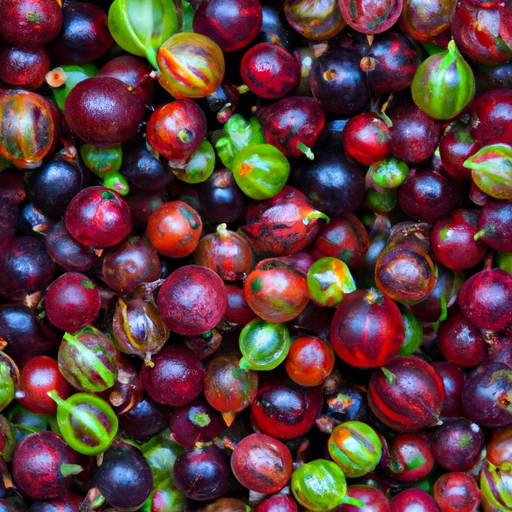Gooseberry
Description

The gooseberry, with its vibrant color and distinctive tart flavor, is a small, spherical fruit that has been a beloved ingredient in culinary traditions around the globe. Ranging in color from green to red to purple, gooseberries can add a unique zest to a wide variety of dishes. They are commonly used in jams, desserts, and savory sauces, and are valued not only for their taste but also for their nutritional content.
Common uses
Gooseberries are often used in sweet concoctions such as pies, tarts, and preserves, as well as in savory dishes where their acidity balances rich meats or creamy cheeses. They are also enjoyed fresh, made into chutneys, or even pickled for a tangy snack.
Nutritional value
Calories
Gooseberries are low in calories, with approximately 44 calories per 100 grams (about 3.5 oz).
Protein
They contain about 0.9 grams of protein per 100 grams (about 3.5 oz).
Fat
Gooseberries are virtually fat-free, with only 0.6 grams of fat per 100 grams (about 3.5 oz).
Carbohydrates
They comprise about 10 grams of carbohydrates per 100 grams (about 3.5 oz), with a significant portion of that being dietary fiber.
Vitamins
Gooseberries are a rich source of Vitamin C, providing around 27 mg per 100 grams (about 3.5 oz). They also contain Vitamin A and several B vitamins.
Minerals
Rich in minerals, gooseberries provide potassium, calcium, phosphorus, and manganese in notable amounts.
Health benefits
With their high vitamin C content, gooseberries can support immune health and skin integrity. The dietary fiber aids digestion, while the low-calorie count makes them a suitable addition to weight management diets. The antioxidants found in gooseberries are believed to have anti-inflammatory and anti-cancer properties.
Potential risks
Gooseberries are generally safe to eat, but as with any food, they should be consumed in moderation. People who are prone to kidney stones should be cautious due to the fruit's oxalate content, and those with allergies to other berries should consult with a healthcare provider before adding gooseberries to their diet.
Common recipes
Gooseberries are featured in recipes such as gooseberry fool, compote, pies, crumbles, and as a topping for ice cream or yogurt.
Cooking methods
They can be stewed, baked, or used raw. Gooseberries hold up well when cooked, which makes them suitable for hot preparations and preserves.
Pairing with other ingredients
Gooseberries pair well with flavors such as elderflower, citrus, cream, and almond. They also complement fatty fish and game meats due to their acidity.
Summary
In summary, the gooseberry is a versatile and nutritious fruit that offers both sweet and tart flavor profiles, making it an excellent ingredient for a multitude of dishes. Its health benefits and culinary uses have been recognized and appreciated in different parts of the world, earning it a place in a variety of traditional and modern recipes.